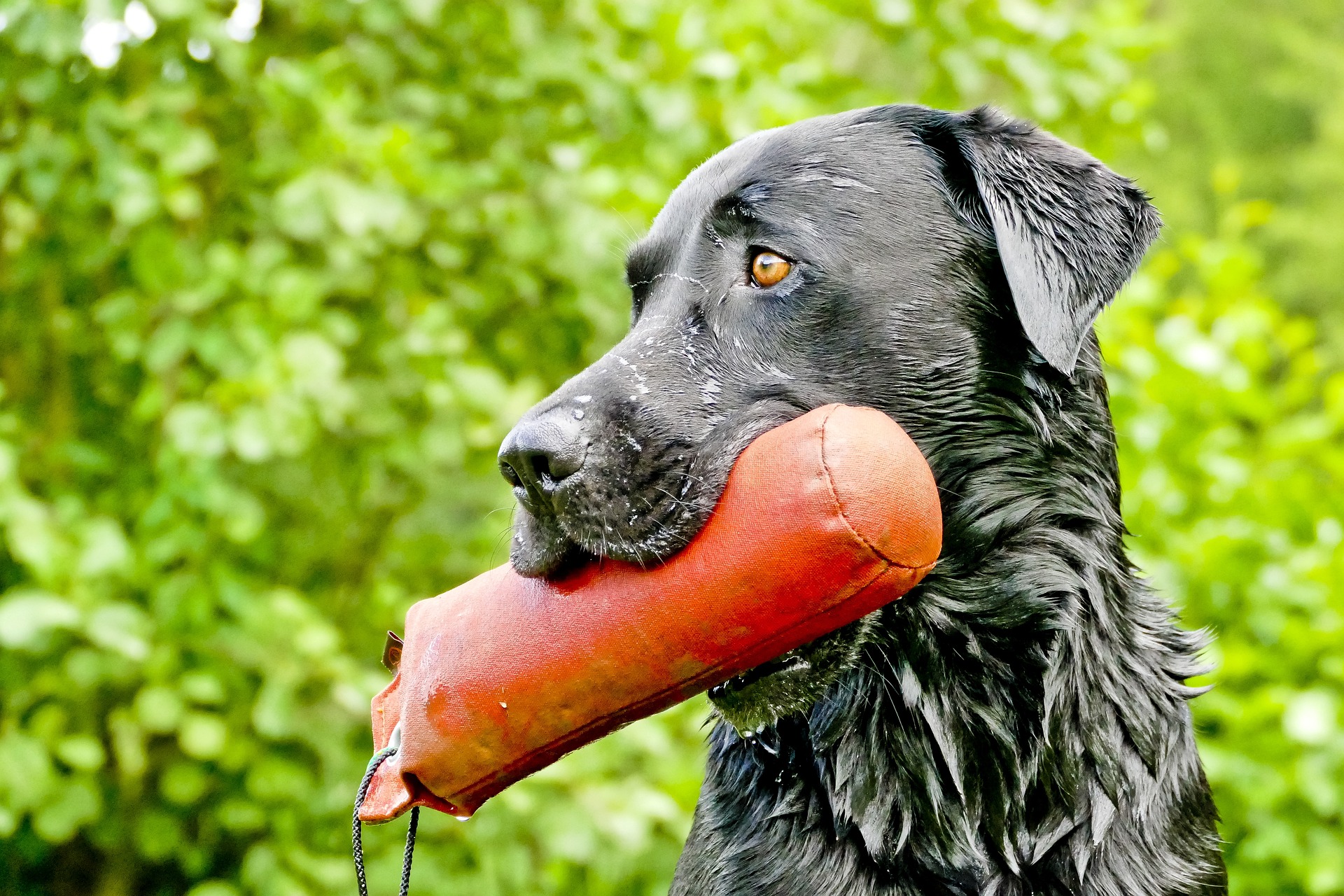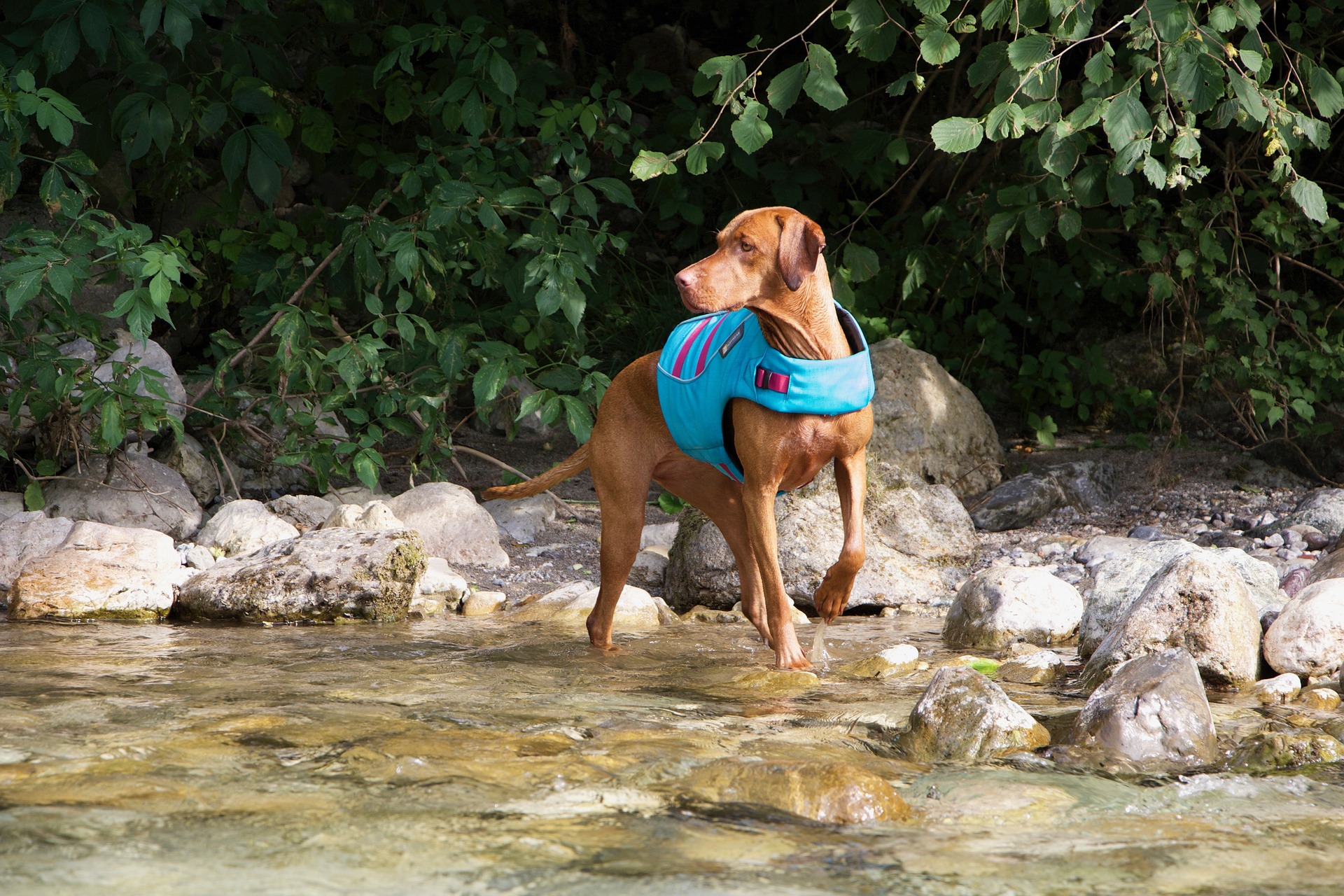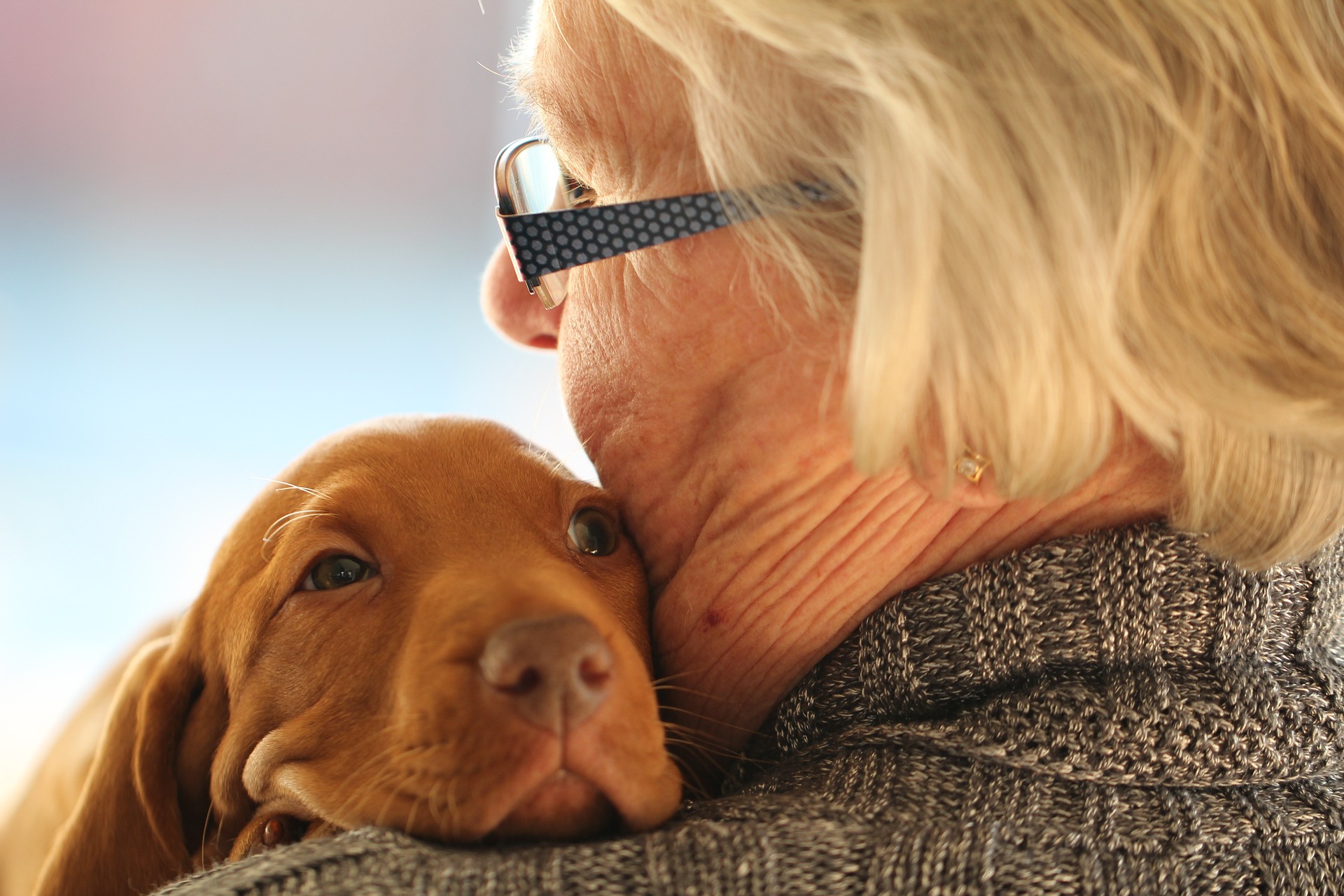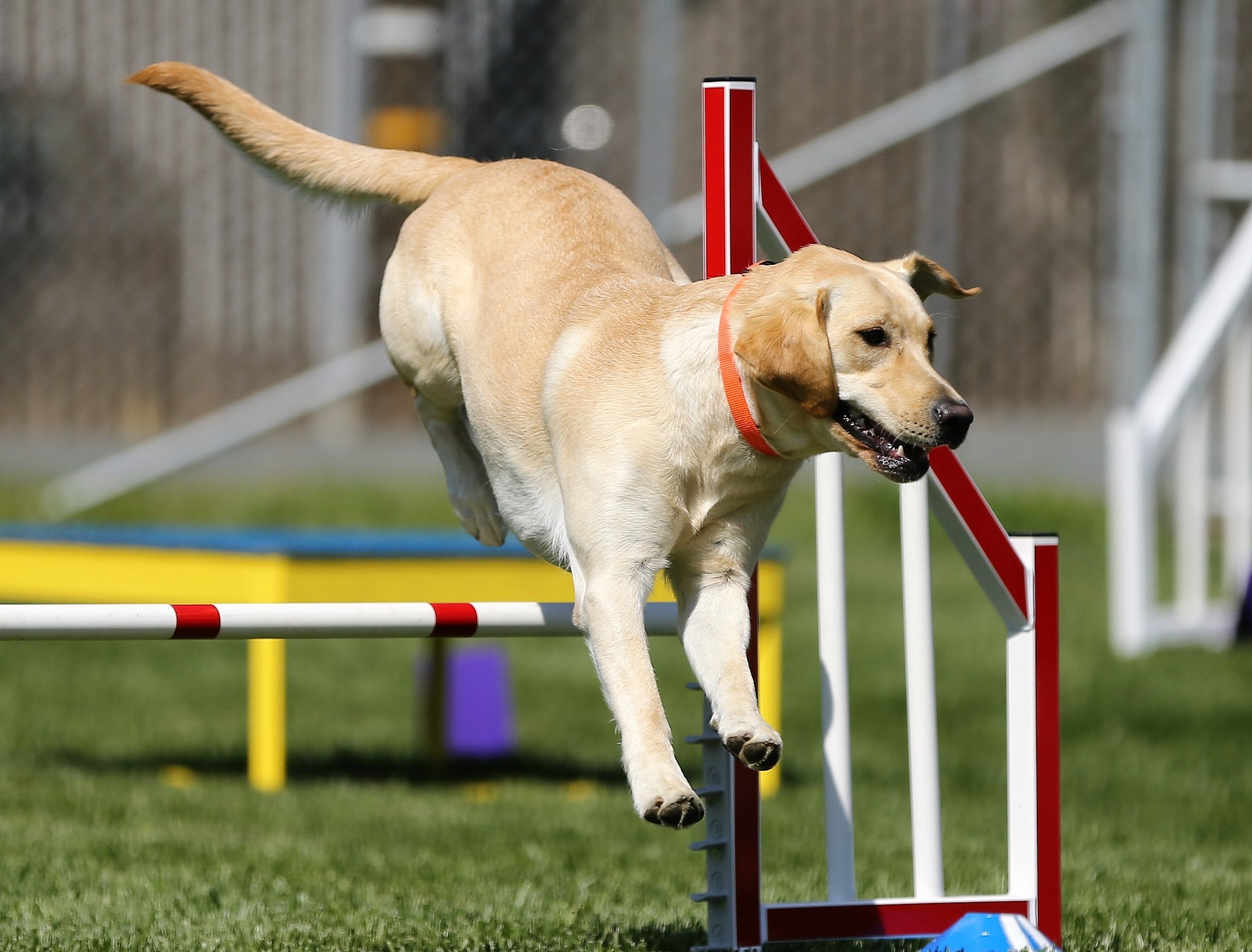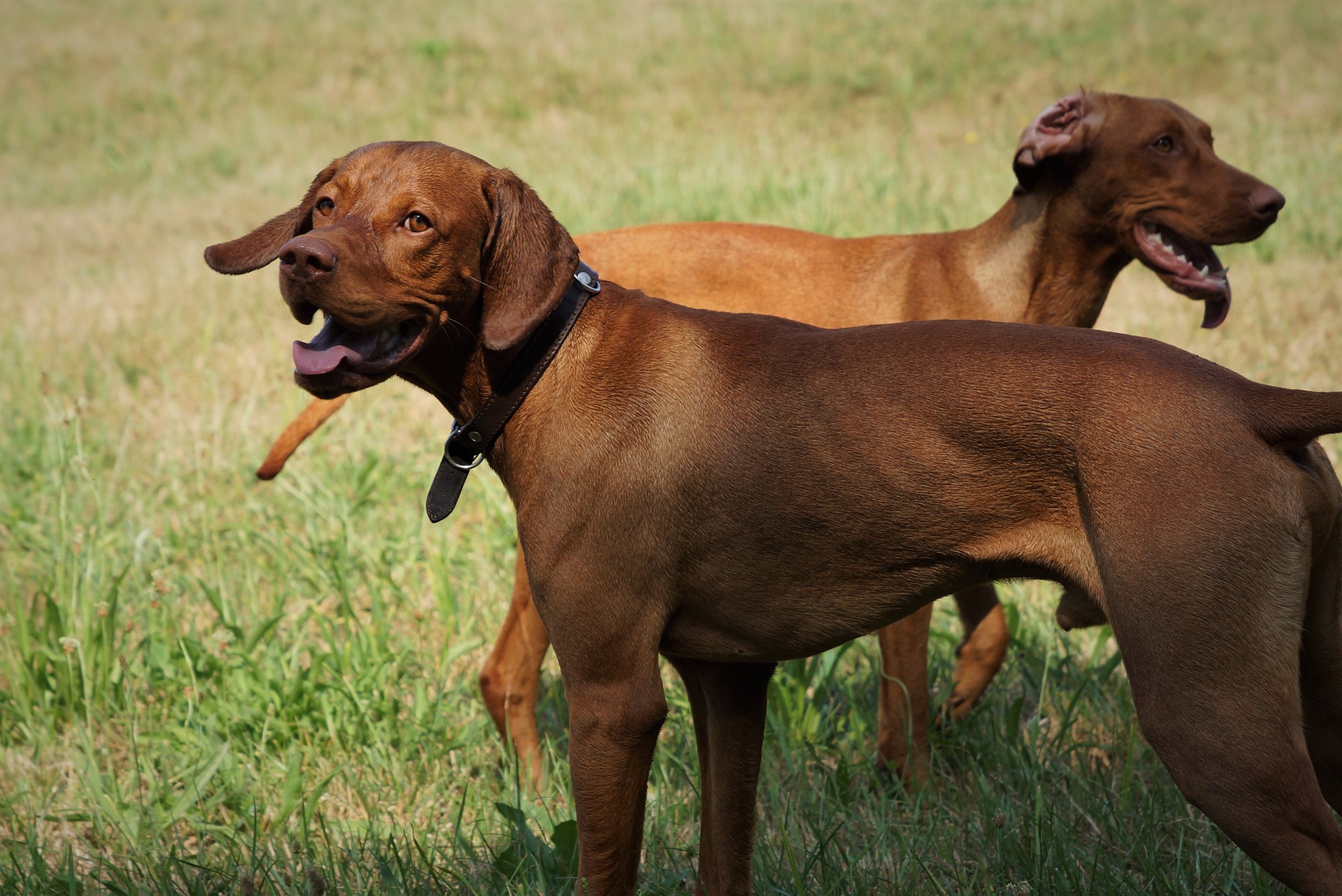When it comes to choosing a family pet, the decision often comes down to finding a breed that aligns with the family’s lifestyle, energy levels, and companionship needs.
The Vizsla and Labrador Retriever are two breeds that often make the list for potential dog owners. They are both known for their intelligence, loyalty, and the potential for high energy. However, each breed brings its own unique traits to the table that may make one a better fit for a particular family than the other.
The Vizsla, with its sleek, rust-colored coat, and the Labrador, often seen in shades of black, chocolate, or yellow, not only look very different but also have distinctive histories and personalities.
Vizslas carry an air of aristocracy, hailing from Hungary with a history deeply rooted in being a skilled and noble hunting companion.
Labradors, originally from Newfoundland, are renowned for their friendly disposition and versatility, serving roles from aiding hunters to assisting people with disabilities. These dogs fulfill the needs of their human companions in different ways, which is crucial to consider when choosing a new four-legged family member.
Today, we will take an in depth look at the Hungarian Vizsla vs Labrador dog breed comparison.
Key Takeaways
- Both Vizsla and Labrador Retrievers are intelligent and capable breeds with loyal dispositions
- Vizslas have a noble history and require less grooming, while Labradors are known for their versatility and friendly nature
- The two breeds have different exercise needs and social characteristics important in selecting a suitable family dog
Breed Origins and History
The Vizsla and the Labrador Retriever are breeds with rich heritages, each deeply rooted in their countries of origin, Hungary and Canada, respectively. Both are recognized by the American Kennel Club. Here’s a brief dive into their storied pasts:
Hungarian Vizsla:
- Origin: The Vizsla breed hails from Hungary, where they served as loyal hunting dogs to Magyar tribes over a thousand years ago.
- Function: These elegant dogs were not just companions but versatile hunters skilled in pointing and retrieving.
Labrador Retriever:
- Origin: Despite their name, Labradors originated from the Canadian island of Newfoundland, not Labrador. They were fine-tuned by English breeders.
- Function: Originally used by fishermen to help haul nets and fetch ropes, Labradors became esteemed for their soft mouths and retrieving abilities.
Their histories are not only integral to their development as breeds but also to the cultures they come from. Both the Vizsla and the Labrador have been by humanity’s side for centuries, not just as workers but as beloved companions.
The Vizsla, with roots in nobility and war, and the Labrador, from humble fisherman’s aide to the family’s favorite, both breeds carry a sense of dignity from their unique origins.
Both popular dog breeds have similar cousins. The Vizsla, for example, is part of the hound group, alongside the likes of Weimaraner, Rhodesian Ridgeback, German Shorthaired Pointer, and more. Labradors, on the other hand, are often mistaken to their cousin, the Golden Retriever.
Physical Characteristics
When deciding between a Vizsla and a Labrador Retriever, understanding their physical characteristics can really help paint a picture of what it’s like to have one of these lovely dogs as a part of your life. They both have unique features that make them stand out in the dog world.
Size and Build
Vizslas have a notably lean and muscular build, presenting an elegant and athletic appearance. They typically weigh between 45 to 65 pounds, with a height ranging from 21 to 24 inches at the shoulder.
In contrast, Labradors are more robust and sturdy, sporting a stockier frame. A Labrador’s weight usually falls in the range of 55 to 80 pounds, and their height spans from 22 to 25 inches tall at the shoulder.
Coat and Colors
Both breeds have short coats, but there are distinguishable differences.
Vizslas sport a smooth coat that lies close to their bodies, known for its golden rust color. It’s a single layer coat, which means they generally shed less than Labs. On the other hand, Labradors have a denser double coat designed to provide insulation and waterproofing, which also comes with a heavier shedding.
Labradors come in three primary solid colors: black, yellow, and chocolate.
Visual Distinctions
When they’re side by side, it’s easy to spot a few key visual differences between Vizslas and Labradors.
Vizslas have a distinct aristocratic look, with their tight skin and well-defined musculature, not to mention their signature amber eyes that blend beautifully with their coat. They have a more streamlined look compared to Labradors.
Labs have a broader head and kinder eyes, their body is more brawny, and they also tend to look more approachable, thanks to a generally relaxed expression and friendly demeanor. Fun fact: Nowadays, people also make a distinction between an American Lab and an English Lab.
Temperament and Personality
When comparing the Vizsla and the Labrador, their temperaments and personalities are heartwarming topics to explore. They both show a level of loyalty and affection that makes them adored companions, but their behavior and energy levels have distinct characteristics that cater to different family dynamics and lifestyles.
Behavioral Traits
The Vizsla is known for being gentle and eager to please, with an energy level that accompanies a high need for regular exercise. They are smart, with a slight stubborn streak, and respond well to consistent training methods. The Vizsla puppy is often called a Velcro dog because of its attachment to its dog owners.
Meanwhile, the Labrador Retriever’s behavior is often described as outgoing and loving. Labs are also intelligent and generally easy to train, with an energy level that is adaptable but certainly benefits from regular physical activity.
- Vizsla:
- Energy level: High
- Temperament: Gentle, sometimes stubborn
- Training response: Eager to please, requires consistency
- Labrador Retriever:
- Energy level: High, but adaptable
- Temperament: Outgoing, friendly
- Training response: Generally easy to train
Friendliness Levels
In terms of friendliness, both breeds display a heartwarming openness to human connections.
Vizslas tend to need some socializing before they warm up to strangers, whereas Labradors typically show an immediate friendliness to both familiar faces and newcomers.
Both are affectionate with their families, but the Lab may be more immediately welcoming to a larger circle, including other pets.
- Vizsla:
- Friendly with family: Yes, affectionate
- Friendly with strangers: After warming up
- Other pet-friendly: Generally, with proper socialization
- Labrador Retriever:
- Friendly with family: Highly affectionate
- Friendly with strangers: Very welcoming
- Other pet-friendly: Yes, known for being good with other pets
Family Suitability
Labradors are often highlighted as the quintessential family-friendly dog, known for their patience and gentleness with children. They tend to fit into various types of households with ease.
Vizslas, on the other hand, are also loving and loyal, making wonderful family pets for those who can match their exercise needs and sensitivity.
Both breeds thrive in an environment where they can form strong bonds and be part of daily activities.
Exercise and Activity Needs
Both Vizslas and Labradors thrive with regular exercise and have a zest for life that’s fueled by their high energy levels. They require daily physical and mental stimulation to stay happy and healthy.
Required Daily Exercise
Vizslas and Labrador Retrievers both need significant daily exercise to meet their high-energy needs.
- Vizslas: Typically, they require at least 1 to 1.5 hours of vigorous exercise per day. Without it, they can become restless and exhibit unwanted behaviors
- Labradors: They generally need a similar amount of exercise, around 1 to 1.5 hours daily. As a breed known for its endurance and energy, a bored Lab is often a mischievous one
Suitable Activities
Choosing the right activities for these high-energy breeds is essential in providing both mental stimulation and physical exercise.
- Hiking: Both breeds are fantastic companions for hiking, able to handle long distances with their owners
- Swimming: Labradors have a well-known love for water and are natural swimmers. Vizslas can also enjoy swimming, which is a wonderful way to burn energy
- Playing Fetch: Fetch is a terrific way to engage these dogs in exercise that also taps into their retrieving instincts, especially for Labradors
- Agility Training: This not only exercises their bodies but gives their minds a workout too. Both Vizslas and Labradors excel at such activities
- Obedience Training: It’s beneficial to start dog training as early as possible. Learning commands and new tricks helps to provide much-needed mental stimulation for these intelligent breeds
Training and Intelligence
Choosing a pup involves understanding their smarts and training ease. Both the Vizsla dog breed and the Labrador Retriever are top contenders in obedience and agility, eager to learn and keen on pleasing their humans. Which is the easier to train? Hungarian Vizsla vs Labrador Retriever? Let’s get into specifics and see why they bring joy to dog training sessions.
Trainability
Vizslas and Labradors are highly trainable, reflecting their intelligence and willingness to follow commands.
Vizslas start their training journey as early as eight weeks old. They swiftly master basic commands such as “come,” “sit,” and “stay.”
Labradors share this aptitude for obedience training, thriving both in learning commands and participating in agility courses.
- Vizsla puppy: These pups are known for their energy and zeal. They have a knack for pointing during hunts, an activity that keeps them mentally stimulated.
- Labrador puppy: Labradors have a rep for being not just smart, but also incredibly sociable. They’re usually the stars in agility tasks, thanks to their build and quick-learning abilities.
Mental Challenges
Keeping their intellect engaged is vital for both breeds, as boredom can lead to unwanted behaviors.
Vizslas may express their smarts in stubbornness if not consistently trained. They are customarily an intelligent breed, often even used for intricate tasks such as bomb-sniffing due to their keen sense of smell and mental sharpness.
Labradors, blessed with a blend of muscle and brainpower, love mental challenges.
They do best with a variety of tasks that keep both their body and mind active. Without these, they might become restless.
They are known for their ability to be trained for diverse roles, showcasing their adaptability and cognition.
Health and Lifespan
When bringing a furry friend into their lives, people want to make sure they’re choosing a companion that’s not only full of love but also has the potential for a long and healthy life.
Common Health Issues
Labradors and Vizslas are generally healthy, but they do have some breed-specific health issues that one should watch out for.
Hip dysplasia, a condition where the hip joint doesn’t fit together perfectly, is commonly seen in larger breeds like these. This can lead to arthritis or lameness, so it’s something to be aware of.
Labrador Retrievers have a tendency toward obesity, which can exacerbate these joint issues.
Both breeds can also be prone to progressive retinal atrophy, an eye condition that can lead to blindness. It’s important for breeders to test for this to prevent it from being passed on.
Another serious concern is bloat, particularly for Vizslas, which is a life-threatening stomach condition that requires immediate veterinary attention.
Sadly, epilepsy has been noted in both breeds. It’s a condition that causes seizures and requires lifelong management.
Lifespan Expectancy
When someone opens their heart to a dog, they’re probably hoping for as many years as possible with their furry friend. On that front, here’s what they can expect:
- Vizslas have a lifespan expectancy of about 12-14 years. Proper care, good nutrition, and regular veterinary visits can help them reach their full lifespan potential
- Labrador Retrievers tend to have a slightly shorter expected lifespan of 10-12 years. Like with Vizslas, good care can go a long way in providing Labs with a long, happy life
Grooming and Care
When choosing between a Vizsla and a Labrador, it’s essential to consider their grooming and caring requirements, as they differ in shedding, coat type, and the frequency of grooming needed.
Maintenance Routines
Vizslas have a short, dense coat with no undercoat, so they shed less compared to Labradors. These dogs do shed throughout the year, but it’s generally more manageable.
They need regular brushing, about once a week, to remove loose hair and distribute natural oils.
On the other hand, Labradors have a double coat which includes a water-resistant outer layer and a soft undercoat, leading to more prolific shedding, especially during seasonal changes.
For Labradors, owners should be prepared for frequent brushing sessions, at least twice a week, and more during peak shedding periods.
Grooming Needs
Regarding grooming needs, Vizslas are somewhat low-maintenance. Their coat is easy to care for— it doesn’t trap much dirt and dries quickly. A monthly bath should suffice, unless they’ve rolled into something particularly messy.
In terms of Labradors, their love for water can mean more frequent baths, especially after those joyful yet muddy swims.
Both breeds will require regular ear cleaning, nail trims, and dental care to keep them happy and healthy.
With Labradors, you might also want to invest in a good vacuum to stay on top of the shedding!
Adaptability and Living Considerations
Choosing between a Hungarian Vizsla vs Labrador dog breed entails considering their adaptability and how they’ll fit into one’s lifestyle and living situation. Both are loving breeds that thrive in a family environment, but their adaptability to living spaces and compatibility with other pets and children can vary.
Living Spaces
Vizslas are highly active and athletic dogs that prefer space to run and play.
While they are adaptable and can live in an apartment, they require ample exercise to prevent obesity and maintain their happiness.
Daily runs or long walks are essential for a Vizsla.
On the other hand, Labradors are also active but might be slightly better suited to various living environments, including apartments, as long as they receive sufficient exercise.
Both breeds have an affinity for being part of the family’s daily activities.
- Vizslas:
- Apartment living: Possible, with ample exercise
- Exercise requirement: High
- Ideal environment: Space to run, active lifestyle
- Labradors:
- Apartment living: Suitable, with daily exercise
- Exercise requirement: Moderate to high
- Ideal environment: Adaptable to various, prefers family involvement
With Other Pets and Children
Labrador dogs are often regarded as the quintessential family dog due to their gentle nature and patience with children. They are friendly, social, and tend to get along well with other pets.
Vizsla dogs are also affectionate with family members and can coexist peacefully with children, but they may require some socialization initially as they are a bit more independent.
However, like Labradors, when raised alongside other pets they can become good companions to them as well.
- Vizslas:
- Children: Affectionate but may need socialization
- Other pets: Can be good companions with proper introduction
- Labradors:
- Children: Natural affinity and patience
- Other pets: Typically social and accepting




